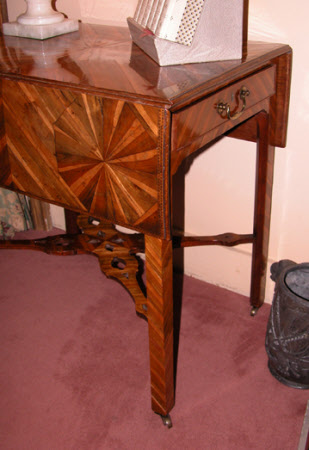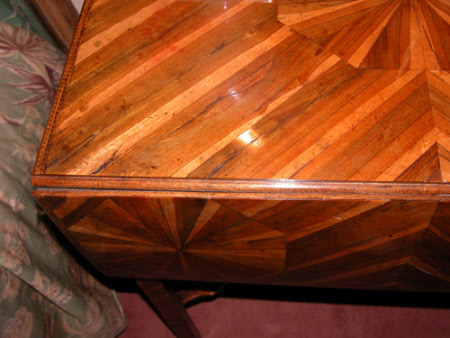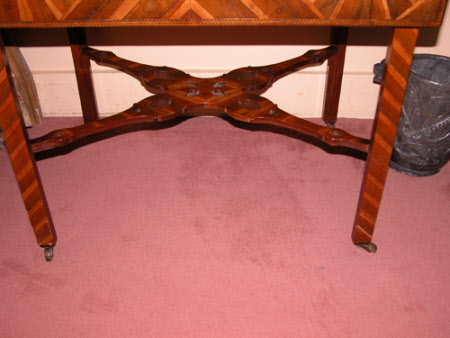Pembroke table
Category
Furniture
Date
circa 1770
Materials
Cocus, oak construction, brass handle and caster
Measurements
70.3 x 70.8 x 48.6 cm
Place of origin
England
Order this imageCollection
Anglesey Abbey, Cambridgeshire
NT 514484
Summary
An unusual cocus-wood Pembroke table, English, circa 1770 The rectangular top with a pair of double hinged leaves held by hinged lopers when open, quarter veneered and with a octagonal panel to the centre with radiating cocus veneers and with chequer border. The leaves with conforming inlay and with a single end frieze drawer below. Raised on chamfered square section legs and brass casters joined by a shaped pierced X stretcher, brass handle to drawer.
Full description
The table is veneered in cocus-wood, a hard, dense wood with a chocolate brown heart and yellow sapwood, often referred to, erroneously, as laburnum. It was imported from the West Indies and was often known as West Indian ebony. It was most commonly used as a cabinet wood between 1660-1740 and in this case the timber has been sawn lengthways to provide a decoratively striped veneer. It is unusual to find a table of this date veneered entirely in cocus. See: A. Bowett, 'Myths of English Furniture History: Laburnum Wood Furniture', Antique Collecting, June 1998, pp. 22-23 James Weedon (October 2017)
Provenance
Bequeathed to the National Trust by Huttleston Rogers Broughton, 1st Lord Fairhaven (1896-1966) with the house and the rest of the contents.




